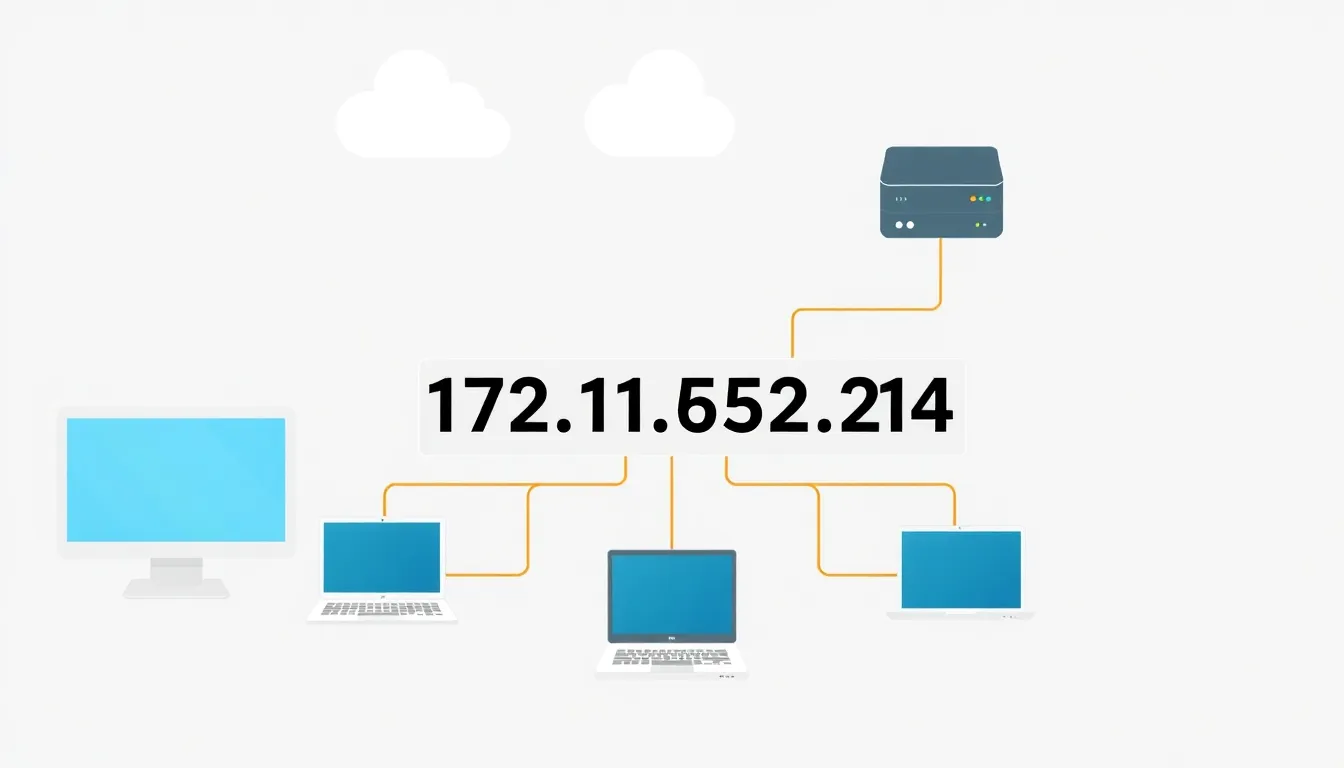Table of Contents
ToggleIn the world of networking, understanding IP addresses and ports is crucial for effective communication between devices. The address 172.16.252.214;4300 represents a specific endpoint within a private network, often used for various applications and services. This unique combination of an IP address and a port number allows for targeted data transmission, making it vital for network administrators and tech enthusiasts alike.
As businesses increasingly rely on robust network infrastructures, knowing how to interpret and utilize these elements becomes essential. Whether it’s for troubleshooting, configuring firewalls, or optimizing performance, grasping the significance of 172.16.252.214;4300 can enhance network efficiency and security. In this article, readers will explore the implications and applications of this address, gaining valuable insights into its role in modern networking.
Overview of 172.16.252.214;4300
172.16.252.214;4300 represents a specific IP address combined with a port number, crucial for communication within a private network. Understanding this combination is vital for effective network management and troubleshooting.
What Is 172.16.252.214;4300?
172.16.252.214 is a private IPv4 address within the 172.16.0.0 to 172.31.255.255 range. This address, along with the port number 4300, denotes a specific service running on a device. Port 4300 typically handles various applications, such as network protocols or custom services, crucial for data transmission in local networks.
Importance of the IP Address
The IP address 172.16.252.214 serves multiple functions in networking. It allows for targeted traffic routing and facilitates device communication within private environments. This address aids in securing data exchanges and assists network administrators in configuring firewalls and access control lists. Utilizing this address enhances overall network performance and reliability, maintaining efficient data transmission across applications.
Technical Specifications
Understanding the technical specifications of the IP address and port number aids in comprehending their roles in networking. The address 172.16.252.214;4300 offers insights into the structure and function of private networking.
IP Address Details
The IP address 172.16.252.214 falls within the private IPv4 range of 172.16.0.0 to 172.31.255.255, making it non-routable on the public internet. It’s utilized predominantly in internal network configurations, allowing devices to communicate without exposing their addresses externally. This address facilitates secure data exchanges between devices within local area networks (LANs) and enhances the overall security posture by minimizing exposure to internet threats.
Port Number Significance
The port number 4300 designates a specific endpoint for data transmission. It commonly associates with services or applications configured to listen on that port. Network protocols such as TCP (Transmission Control Protocol) and UDP (User Datagram Protocol) often use this port for various purposes, including inter-application communication and data transfers. Properly configuring and monitoring this port ensures optimal performance of services linked to 172.16.252.214, critical for maintaining network efficiency and reliability.
Use Cases of 172.16.252.214;4300
The address 172.16.252.214;4300 supports various applications in private networks. Below are some key use cases associated with this specific address and port combination.
Common Applications
- Internal Communication
Internal communication protocols utilize 172.16.252.214;4300 for data transfers. Applications like file-sharing software or internal messaging platforms often configure this address to facilitate seamless interactions among devices.
- Remote Monitoring Services
Remote monitoring solutions might use this IP and port for collecting data from devices within a network. Sensors and monitoring applications rely on the address to send health and performance metrics back to centralized management software.
- Database Connections
Database applications may employ 172.16.252.214;4300 for connecting to backend databases. This setup ensures secure communication between database servers and client applications operating within the same network.
- Web Services
Web services, particularly those designed for internal use, often communicate through this address and port. They might host APIs that other internal applications can access, making data exchange efficient.
Potential Scenarios for Usage
- Network Testing
Technicians can utilize 172.16.252.214;4300 during network testing scenarios. They can run diagnostics and troubleshoot connectivity issues by sending requests to this address and observing the responses.
- Custom Application Development
Developers working on custom applications may configure 172.16.252.214;4300 for their services. By using this address, they can ensure that applications communicate effectively without interference from external traffic.
- Service Configuration
Administrators may need to configure network services on devices using this address. They can designate 172.16.252.214;4300 for specific functions or features, allowing targeted management of services.
- Data Backup Solutions
Data backup systems often leverage 172.16.252.214;4300 for transferring files securely within internal networks. This approach maintains data integrity while reducing exposure to external threats.
Security Implications
Understanding the security implications of the IP address 172.16.252.214;4300 is crucial for safeguarding network integrity. This address, while not exposed to the public internet, can still present vulnerabilities within a private network setting.
Vulnerabilities Associated with 172.16.252.214;4300
- Misconfiguration Risks: Misconfigured devices may expose critical services unintentionally, allowing unauthorized access. Ensuring proper settings on devices using this address minimizes these risks.
- Insider Threats: As a common endpoint in local communications, it can become a target for insider threats. Vigilance in monitoring internal network activities helps detect unusual behavior.
- Service Exploits: Port 4300 may be associated with specific services susceptible to exploits if not regularly updated. Keeping software and services updated reduces the attack surface.
- Lack of Segmentation: Without adequate network segmentation, vulnerabilities can spread easily. Implementing network segmentation limits access, reducing potential threats.
Best Practices for Safeguarding
- Regular Audits: Conducting regular audits of device configurations and service statuses ensures adherence to security policies.
- Access Controls: Implementing strict access controls limits who can communicate with 172.16.252.214;4300, safeguarding sensitive data.
- Monitoring and Logging: Utilizing monitoring tools to log traffic to and from this address enables quick response to anomalies.
- Firewall Configuration: Properly configuring firewalls to restrict traffic to port 4300 minimizes exposure to potential attacks.
- Encryption Protocols: Using encryption for data transmitted over this address enhances security, protecting sensitive information from interception.
Conclusion
Understanding the significance of the IP address 172.16.252.214;4300 is crucial for anyone involved in networking. This address not only facilitates secure internal communications but also plays a vital role in various applications and services. By leveraging this private address and its associated port, network administrators can enhance their systems’ efficiency and security.
Implementing best practices for monitoring and configuring this address is essential to mitigate potential vulnerabilities. As networks evolve and become more complex, staying informed about these elements will empower professionals to maintain robust and secure infrastructures.




